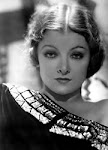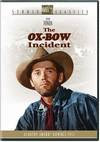A Night at the Opera
A Day at the Races
A Night in Casablanca
First, let me apologize for being away for so long. My wife and I recently moved back to Washington, D.C., and as any anyone who has moved knows, that was a very time-consuming task – not just the packing in Miami but also the unpacking and resetting the phones and computers in D.C.
Now to the subject at hand. My wife has suggested that I’ve been a little too intense in my subject matter of late. Additionally, she has hinted that perhaps I should redirect all the zaniness – which is my natural state of being – that I have been inflicting on her to someone else. And I can think of no better examples of the type of zaniness that floats my boat than The Marx Brothers.
These siblings (Groucho, Chico, Harpo and Zeppo, who is not in any of the films in this discussion) embody everything I admire about comedy – their lack of respect for authority; their crazy antics; their witty and often sexually oriented repartee, and this includes the always mute Harpo; and their exceptional musical talent. While I will attempt to not get carried away with all the hilarious details in the movies I am examining here – A Night at the Opera (released in 1935 in black and white), A Day at the Races (1937, b&w) and A Night in Casablanca (1946, b&w) – I do want to point out those specific scenes that bust my gut every time I see them.
A Night at the Opera mingles social climbing with romance and illegal immigration. Mrs. Claypool wants to join high society and hires Otis B. Driftwood (Groucho) to assist her endeavor. Driftwood’s idea is to bring an opera company from Milan, Italy, to Mrs. Claypool’s Long Island home for a performance. However, Driftwood also has a contract with a tenor named Ricardo, who had been a member of the opera company until he was edged out by another tenor named Rudolfo. The main incentive for the new tenor is to woo Rosa, the company’s lead soprano who is in love with Ricardo. Assisting Driftwood are two off-the-wall friends of Ricardo's – Tomasso (Harpo) and Fiorello (Chico).
The story takes place during a time when trans-Atlantic crossing were made by ocean liners. So to keep the romantic angle alive, Tomasso, Fiorello and Ricardo stow away on the ship and hope to enter the United States illegally. This brings me to my favorite scene of the movie, which has become a sort of iconic symbol of the hilarity of the Marx Brothers. As Driftwood settles into his rather small cabin, Tomasso and Fiorello show up. To Driftwood’s chagrin, they begin ordering and accepting all kinds of services – including food and personal grooming, to name a couple – that are provided by the ship’s crew. And of course, all these service providers turn up at about the same time with all them stuffing themselves into the room until finally some one opens the door and they all tumble out like a closet overstuffed with sports gear and other seldom-used items.
Naturally, by movie’s end and with the help of the constant insanity of Driftwood, Tomasso and Fiorello, the lovers are reunited, the show is a success, the immigration problems are overlooked, Mrs. Claypool achieves her goal and Driftwood appears to have become successful in his primary motivation – getting into Mrs. Claypool’s financial good graces.
A Day at the Races is about a horse doctor named Hackenbush (Groucho) who is asked to join the staff of a sanitarium in an attempt to keep the hospital open. The owner of the sanitarium is a young woman named Judy, who is being threatened by a banker named Morgan, who wants to close the facility. Judy’s richest patient, Mrs. Upjohn, has also become critical of her care at the sanitarium and threatens to return to her personal physician. That physician is Hackenbush, who has tricked Mrs. Upjohn into believing that he is a regular medical doctor. Tony (Chico), an employee at the sanitarium, then contacts Hackenbush and convinces the horse doctor to join the facility’s staff – thus mollifying Mrs. Upjohn.
But Morgan continues his campaign to close the institution and Judy only hope of keeping it open rests with a horse that Gil, her boyfriend, owns and its chances of winning a high-stakes steeplechase. The jockey who is to ride Gil’s horse, which is named Hi-Hat, is Stuffy (Harpo).
I have two favorite scenes in this film. The first is when Hackenbush, Tony and Stuffy are joined by a large group of black actors and actresses (both adults and children) who sing and dance their way through a musical number that is heavily influenced by gospel music. It is a wonderfully engrossing scene that forces a smile onto your face – and don’t be surprised if you find your foot tapping along with the music. I especially love it when the chorus urges “Gabriel” to blow his horn and Stuffy obliges by playing a flute.
The other scene is the race. We find out that Hi-Hat hates Morgan and the sight of the banker’s face or the sound of his voice is like a jolt of adrenaline that makes the horse run faster. Stuffy begins the race by carrying a picture of Morgan, but a gust of wind blows it out of his hand. Hackenbush and Tony then steal the race course’s microphone and alternately antagonize Morgan, who is in the stands rooting against Hi-Hat. Each time Morgan is pestered, he yells at his foils. The yelling is picked up by the microphone and spurs Hi-Hat to run faster. Of course, there is a mix-up in the race when Hi-Hat and another horse both stumble while going over one of the jumps. The two jockeys remount their muddied horses and when the race ends, it appears that Hi-Hat has lost. However, when the winning horse reacts to Morgan’s voice, Stuffy rushes over to wipe the mud off the winning horse’s head and low and behold, the horse in the winner’s circle is Hi-Hat.
In A Night in Casablanca, the bad guys are post-war Nazis who are trying to smuggle stolen art and other valuables to South America. The stolen treasure is hidden in the hotel being managed by a Mr. Kornblow (Groucho). He was elevated to the position after the three previous managers were killed by the Nazis to keep their secret safe. But as always with the Marx brothers, these bad guys are no match for the crazy antics of Kornblow and his assistants Corbaccio (Chico) and Rusty (Harpo).
My favorite part of this film is when the Nazi leader concocts a plan to kill Kornblow by arranging a tryst between the hotel manager and a woman who is pretending to be the Nazi’s fiancée. The idea is that the jealous Nazi will burst into her room, feign indignation and then shoot Kornblow. But Rusty and Corbaccio get wind of the plan and a hilarious game of “musical rooms” ensues. The game works like this. Kornblow enters the woman’s room with his arms filled with flowers and champagne. As the wooing is about to commence, Rusty and Corbaccio chase the never-gonna-happen lovers out of the room. As Kornblow collects his instruments of romance – the flowers and champagne – the woman leaves a note telling the head Nazi which room they are supposed to be in. The Nazi enters the empty room, finds the note and heads for the new location. But Rusty and Corbaccio are one step ahead of him and Kornblow and the woman are relocated again. This futile chase – futile for both the Nazi and Kornblow – continues from room to room until it becomes obvious that the tryst is never going to happen.
I can’t imagine that anyone who claims to be a fan of classic films could have missed seeing at least one Marx Brothers movie. I’m not exactly sure that you will come away from any of their films thinking you actually learned something – although one might glean from them that the purpose of life is to snub your nose at authority, which at times is an understandable reaction to the real-life tomfoolery which is often forced upon us. But I am sure that these guys will make you laugh out loud. And laughter can be a great remedy for many of life’s problems – especially those that are beyond our ability to control.
Friday, June 12, 2009
Subscribe to:
Post Comments (Atom)






























































No comments:
Post a Comment